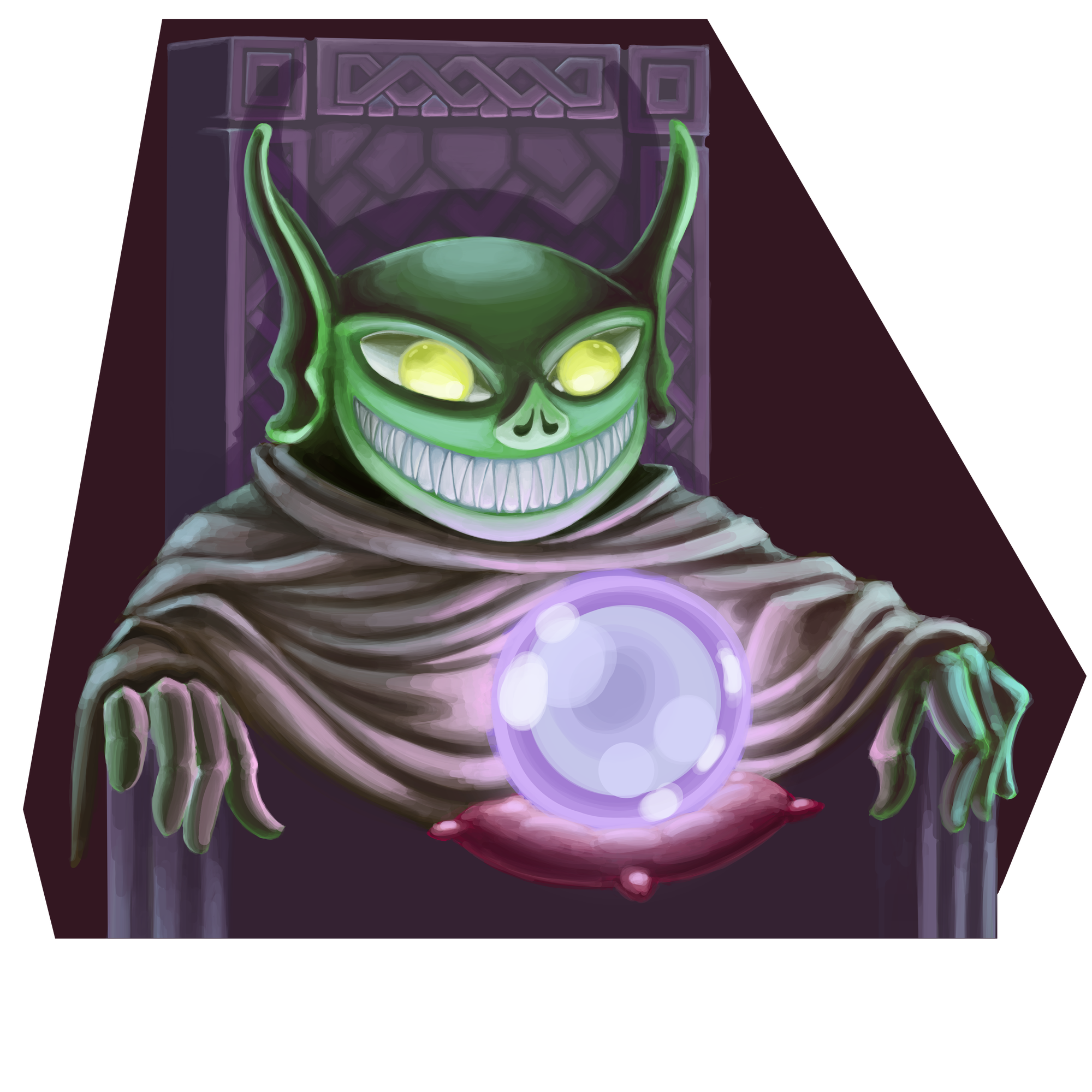Discovering Goblin Camp.
The user experience is quite straightforward if you don’t mind a bit of reading.

This week, I streamed an early-access title called Goblin Camp. It is a survival colony builder by a small studio based in Finland. On its surface, it looks like many other games in the genre. However, this game has a much longer history than it might seem. In order to learn more about it, we have to go back in time. In 2010, Dwarf Fortress had gained a lot of traction.
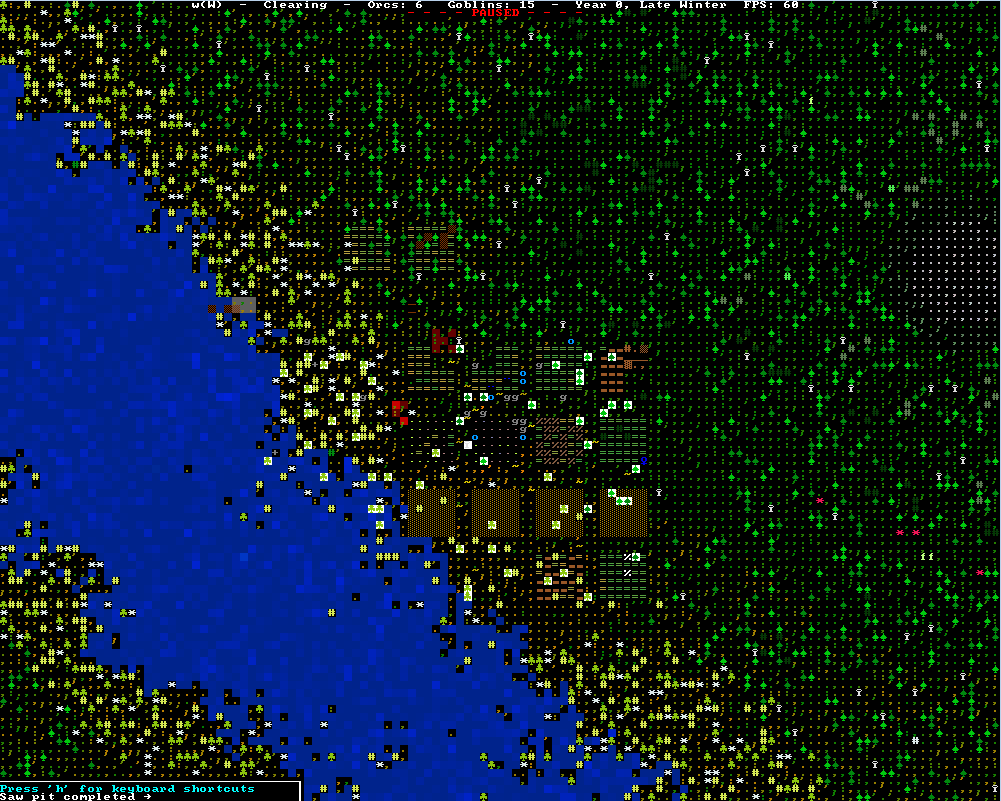

When something catches on and large groups of people notice, it inspires imitators. This builds innovation and solidifies a style of art form within a genre—whether you call it a survival city builder, colony builder, or rogue-like city builder. Goblin Camp was one of those games that took many ideas from the foundation of Dwarf Fortress, but made enough changes to feel unique and carve out its own space. The main focus of Dwarf Fortress is scale, as much scale as possible—even to its own detriment. Simulating everything has always been and will always be the goal, and an admirable one at that. Goblin Camp took most of its ideas from the fortress mode of Dwarf Fortress, where the end goal is building the most successful fortress possible, while the player eagerly anticipates the inevitable calamity. Where Goblin Camp deviated was in simplifying many of the systems. Instead of placing every block individually, buildings are a set size and placed in full. Goblins learn to make new buildings as events happen, with the hope of creating a feeling of natural progression. Like Dwarf Fortress, these early versions of Goblin Camp were built using ASCII graphics. As the game built a humble following, its fans created graphic sets, much like what happened with Dwarf Fortress. Another major difference is evident if you’ve played an Anno game. The developer cites Anno 1404 as another inspiration. In some ways, Goblin Camp is a marriage of Dwarf Fortress and Anno 1404.
In 2012, the original creator stopped working on the project. However, it was an open-source game and still gets updates to this day, now maintained under the name Goblin Lot. The creator of Goblin Camp stepped away from game development until recently, when they announced that Goblin Camp would be returning, rewritten in Unity and released as a commercial product, rendered in 3D but built on the baseline mechanics of the original.
I never played the original version of Goblin Camp, but I had heard of it several times. It would come up in discussions while playing other similar games. Goblin Camp entered Early Access on Steam in September 2024. It released rather quietly and without much fanfare. I remember seeing it in my inbox once or twice and adding it to my wishlist. It sat there for a while because I was more focused on moving to a new apartment than covering other games. Now that I’m settled and getting the itch for a bit of variety, I picked it up and gave it a shot.
At first glance, you're greeted with a simple set of options and various map sizes. You’ll also notice a bunch of optional modifiers that can be enabled. I chose to stick with the default options. What stood out to me was the amount of Finnish folklore in every part of this game. Every building and item has a small quote or poem associated with it. Combine these details with the lovely soundtrack and sound design, and you’ve got yourself a game with a homely yet longing vibe. It’s hard to explain, but I find it rather beautiful.
The user experience is quite straightforward if you don’t mind a bit of reading. The tutorial is clear, albeit a bit wordy. The game features nested tooltips that can slowly fill the whole screen. I haven’t seen this many tooltips since I played At the Gates a few years back. The issues I have with the game are small and mostly seem like things that will be worked out as it develops. You can’t currently rename the goblins, which is unfortunate since renaming the little meeples in these types of games is a big part of helping build their personalities. Another issue I found is that some of the click-and-drag functions, such as claiming multiple ignored items on the map, close after being used. This means you have to click and reopen them every time, which can get a bit tedious but is far from game-breaking. Hotkeys exist for most of the in-game menus but aren’t listed anywhere on the screen. This leaves me guessing what key to press—sometimes I get it right, but often I don’t. The only way to check is by opening the controls screen. These are small gripes, but they do impact my time playing the game.
When you first enter the map, you're greeted by your small "camp" of goblins. They gather around their little portal to the underworld, and it’s your goal to take care of them. When you place a building, the little goblins automatically collect all the needed resources. They chop trees, gather sticks, and build the structure. The game directs you enough to get your fishing shack set up and explains that while the goblins will gather items as needed, they do not keep a surplus. That responsibility is left to the player. Orders are given through the stock screen, specifying how much of each item they need to make and keep on hand. Everything has an expiration date and will decay with time when left outside, meaning you need to create some indoor storage buildings.
As you look around the environment, you’ll notice that there are objects and items scattered all over the place. This is where you really start to see the game's inspiration. Most of these items have a use that you’ll discover as you progress. If you’re like me, you’ll quickly realize that building right next to a river is a bad idea, because it’s springtime, and the floods quickly wash away every one of your neatly laid-out fishing huts. I love this—details and direct consequences due to lack of knowledge are things I enjoy in games like this. Thankfully, all the logs and sticks used to build those huts wash downstream and are easily collected again once the flood season ends.
As summer approaches, the game prompts you to build a bonfire. It’s time to prepare for midsummer sacrifices. This builds up your culture score, which attracts more goblins to your colony and helps keep everyone happy. The sacrifices consist of various little crafts and items that are specified by your goblins. As you build your town, your goblins make "discoveries." These are the beginning of the game’s tech tree and also provide a few free research points. The most important of the early discoveries is unlocking your Shaman. This allows you to build a shaman's hut, and a goblin is elected to the position by your little gaggle of goblins. The shaman can summon a holy tree that provides you with culture and research points. But that’s not all. The shaman can also use a variety of spells. They can manipulate terrain, summon water, create walls of fire, and change wind patterns to create violent effects. Additional spells can be unlocked with research points. The shaman is a fun twist alongside the interesting discoveries system. Once you complete your first year and fend off the first small invasion, the loop begins: building slowly and steadily while defending your little goblins from inevitable demise.
So, how is it? I find it really satisfying to play. I think there are a lot of unique ideas here that don’t fall into the standard archetypes of the genre. It manages to both challenge the player while not feeling too heavy. For example, my first bonfire season failed horribly. I placed it too close to other buildings, and it burned down half of my settlement. Thankfully, I was able to put it out by dousing it in the holy rain from my shaman. There are definitely some quirks here, as is standard with early access projects. Considering the game has a demo available, it’s hard not to recommend giving it a look. I feel like there is a lot of potential here. I hope it doesn’t go unnoticed.
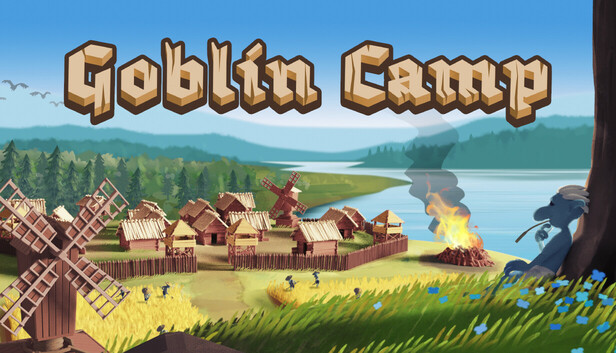
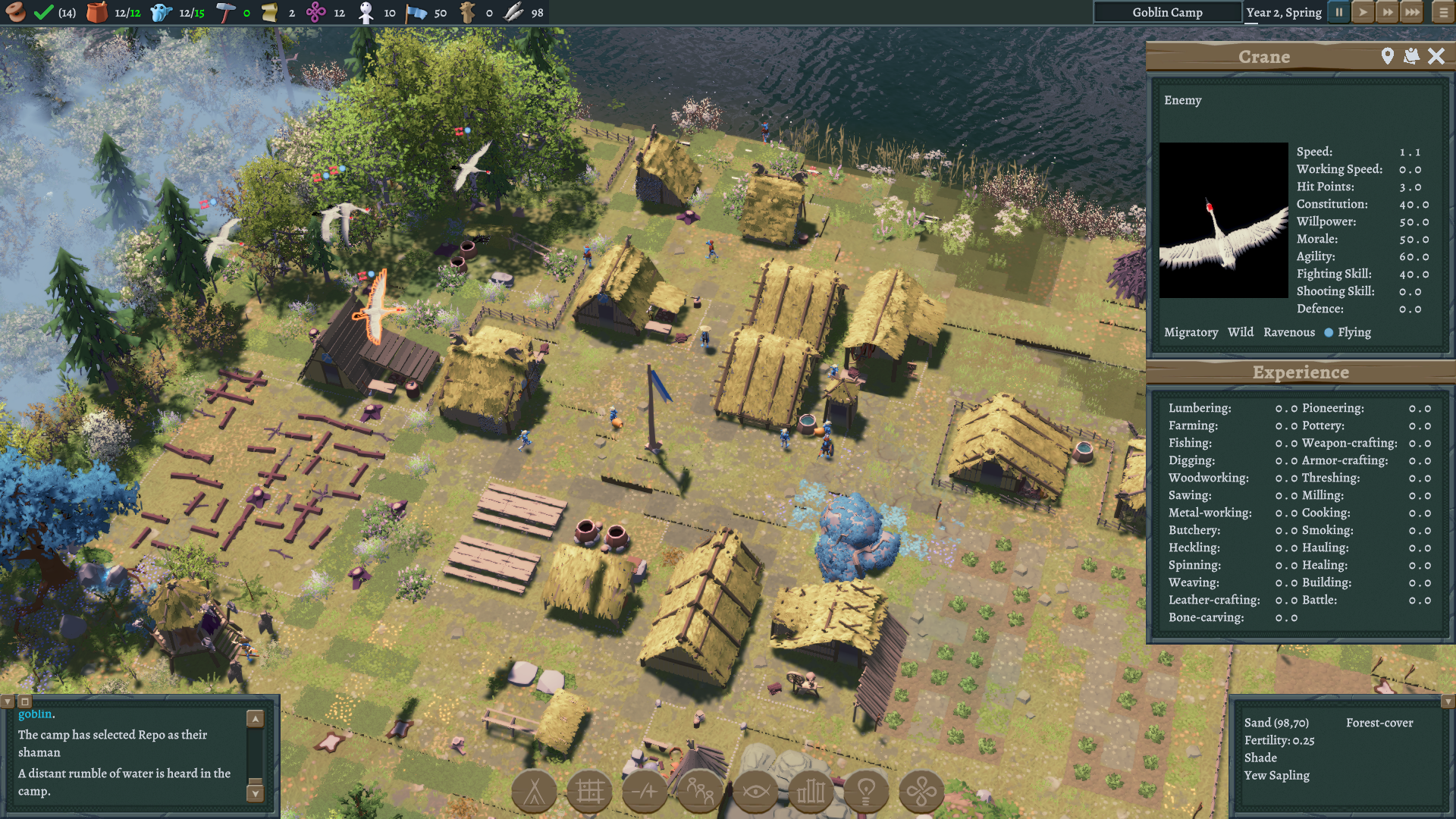
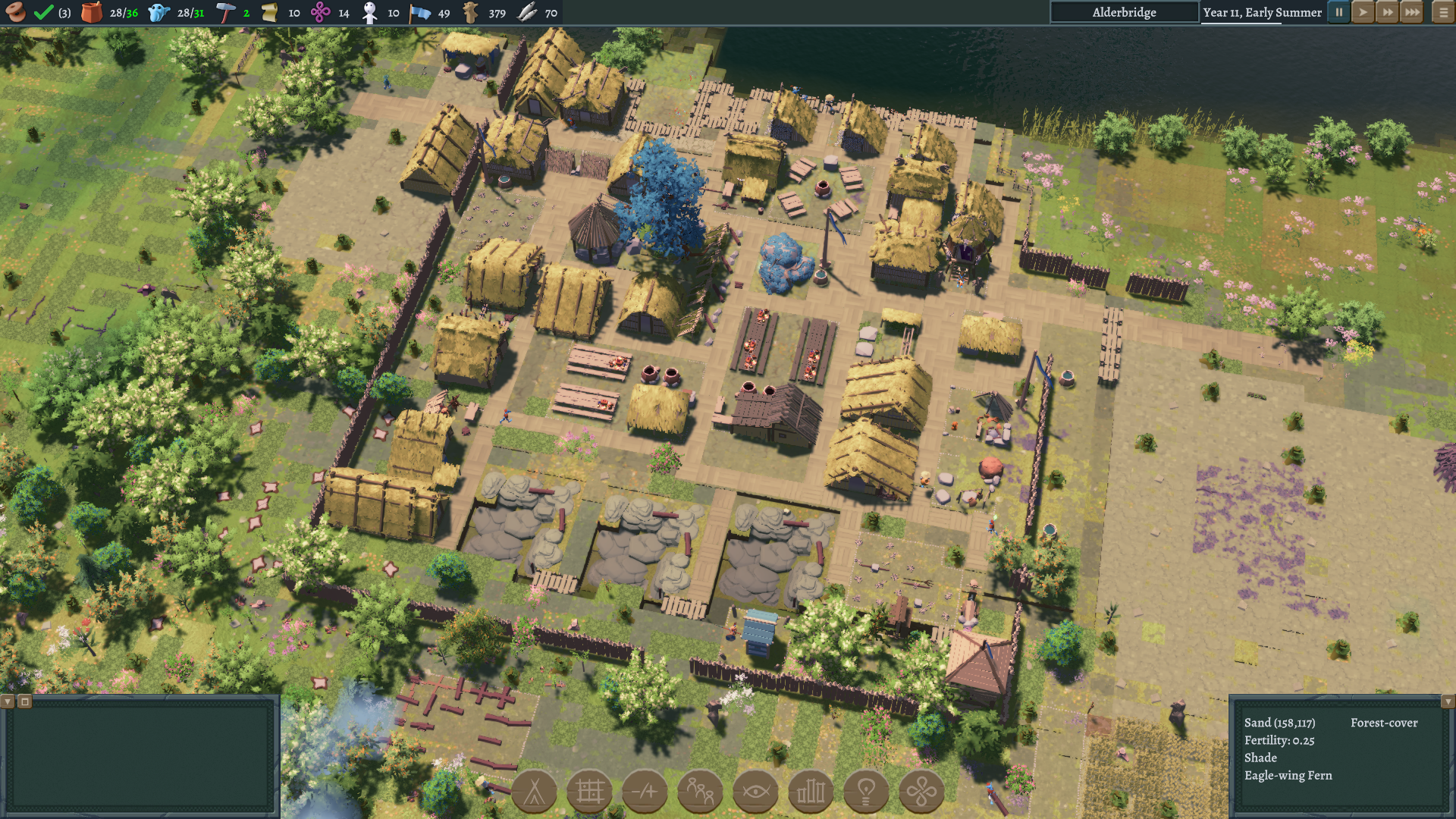
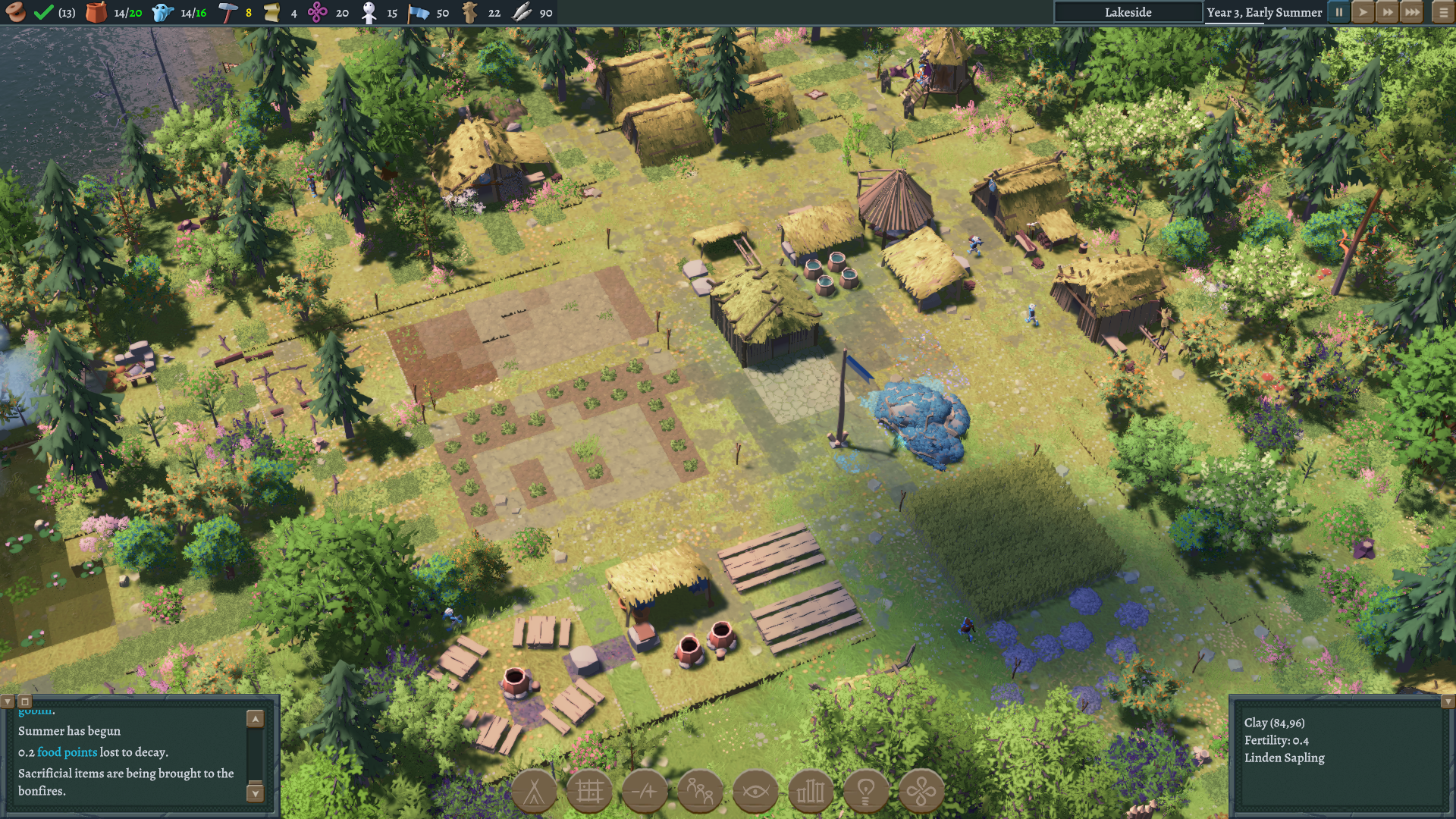
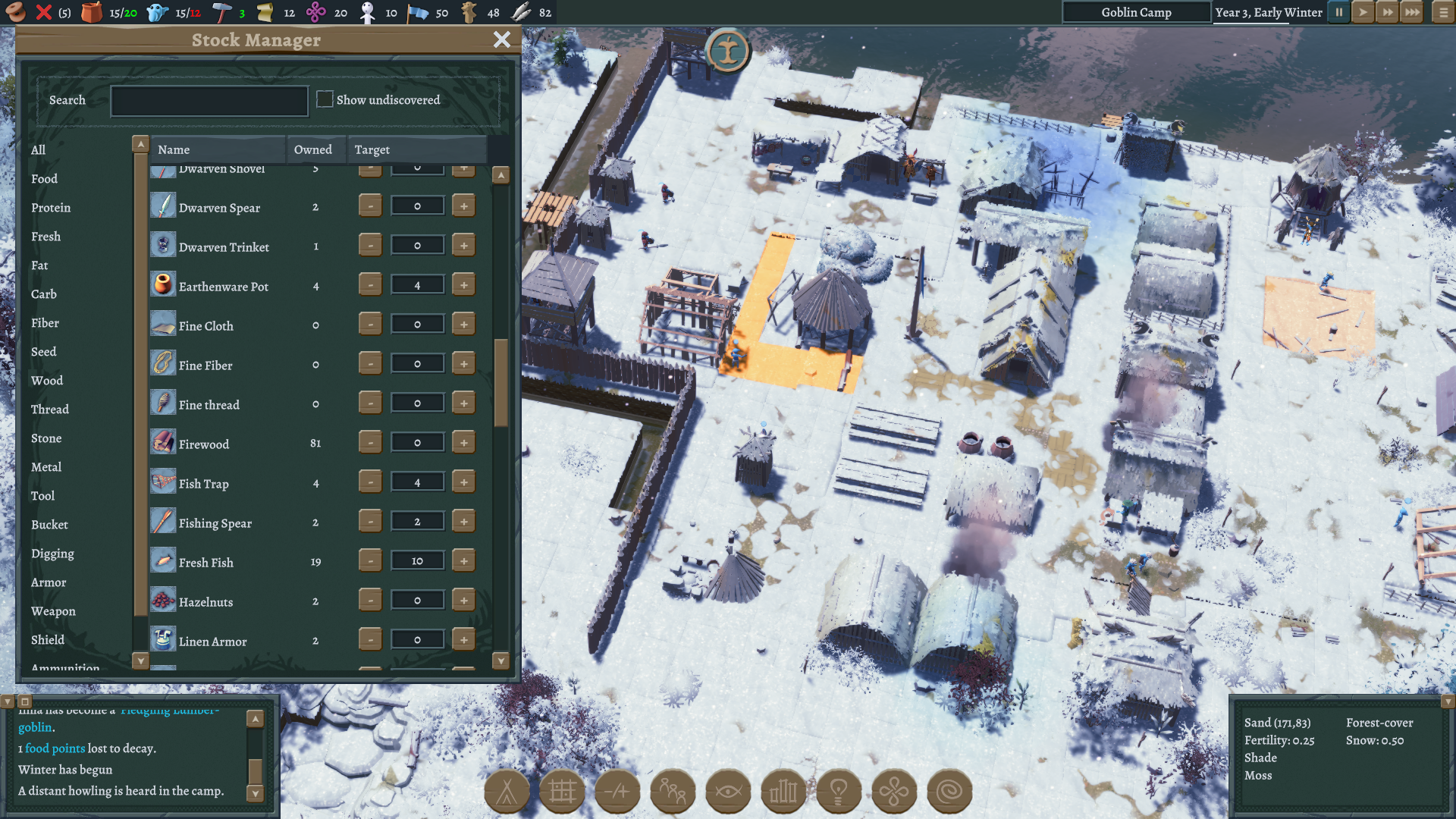
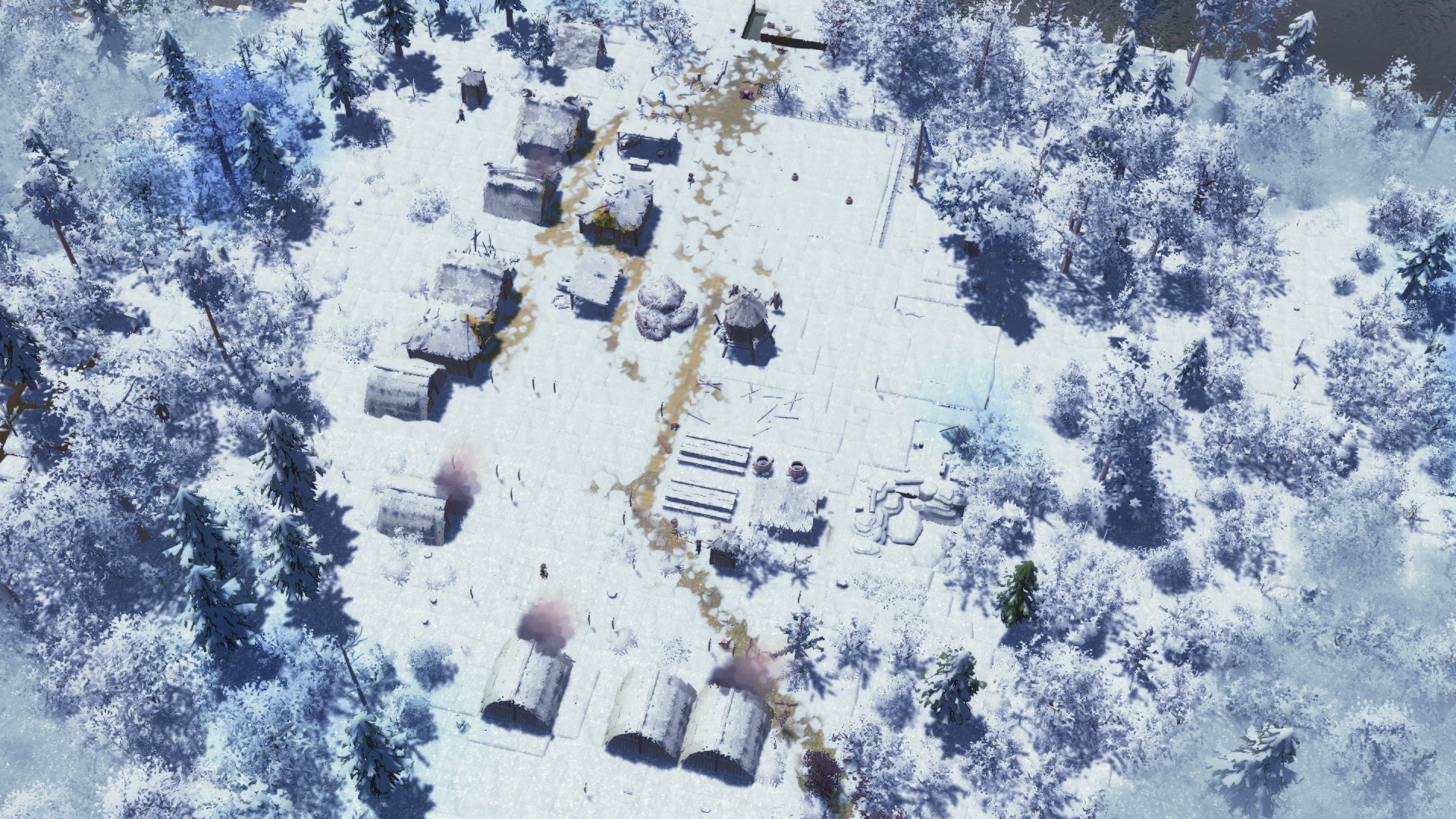
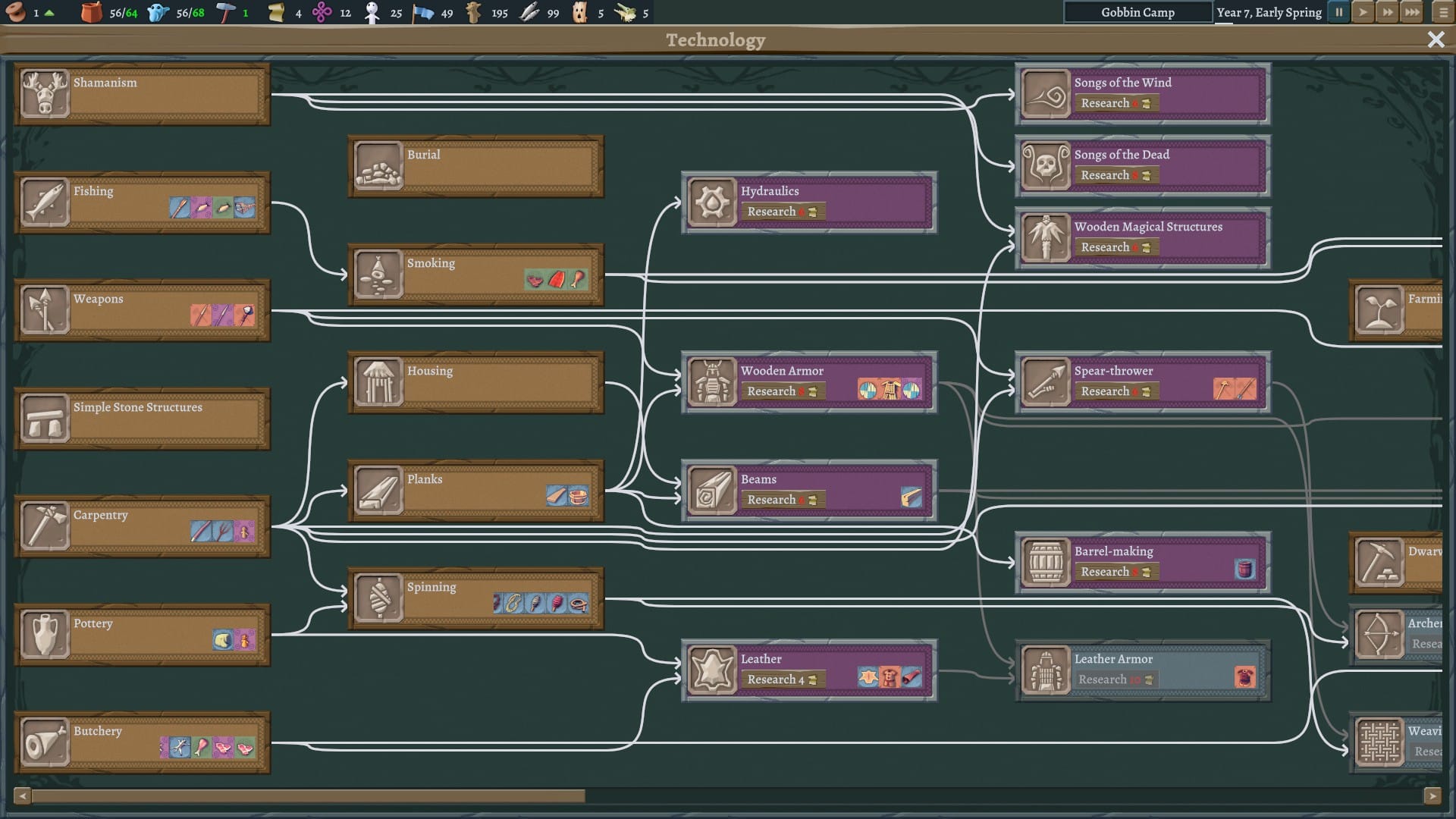
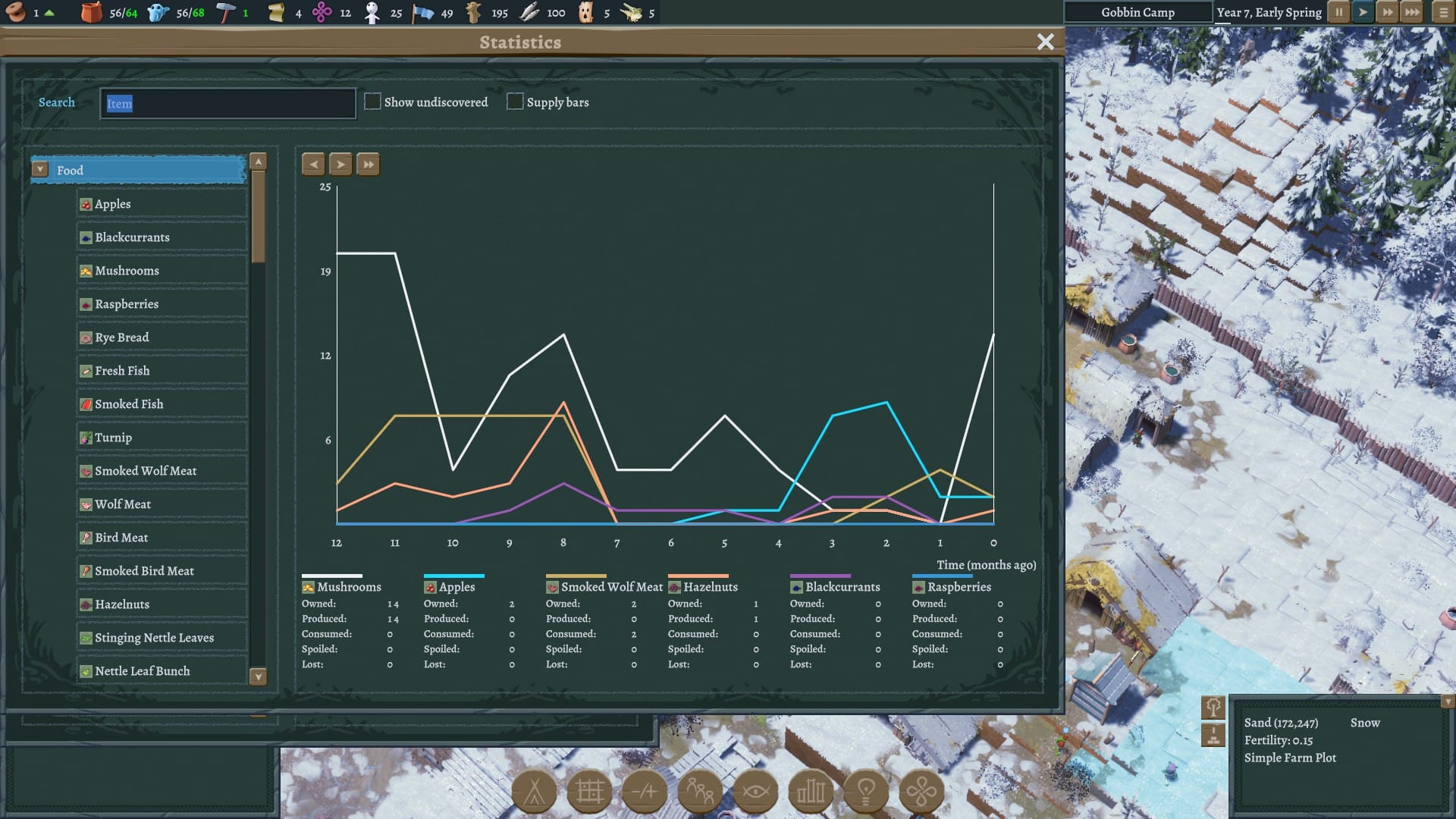
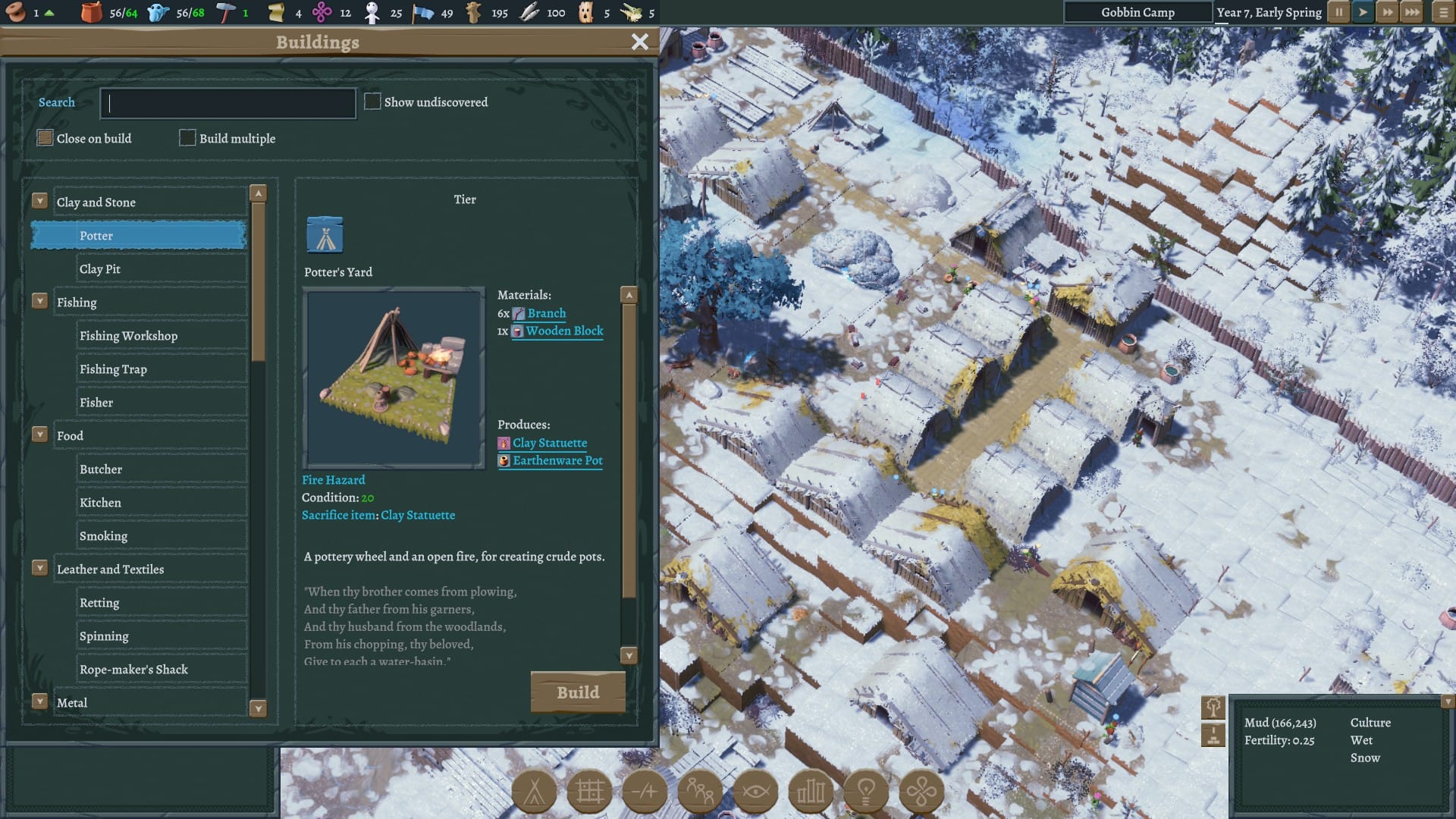
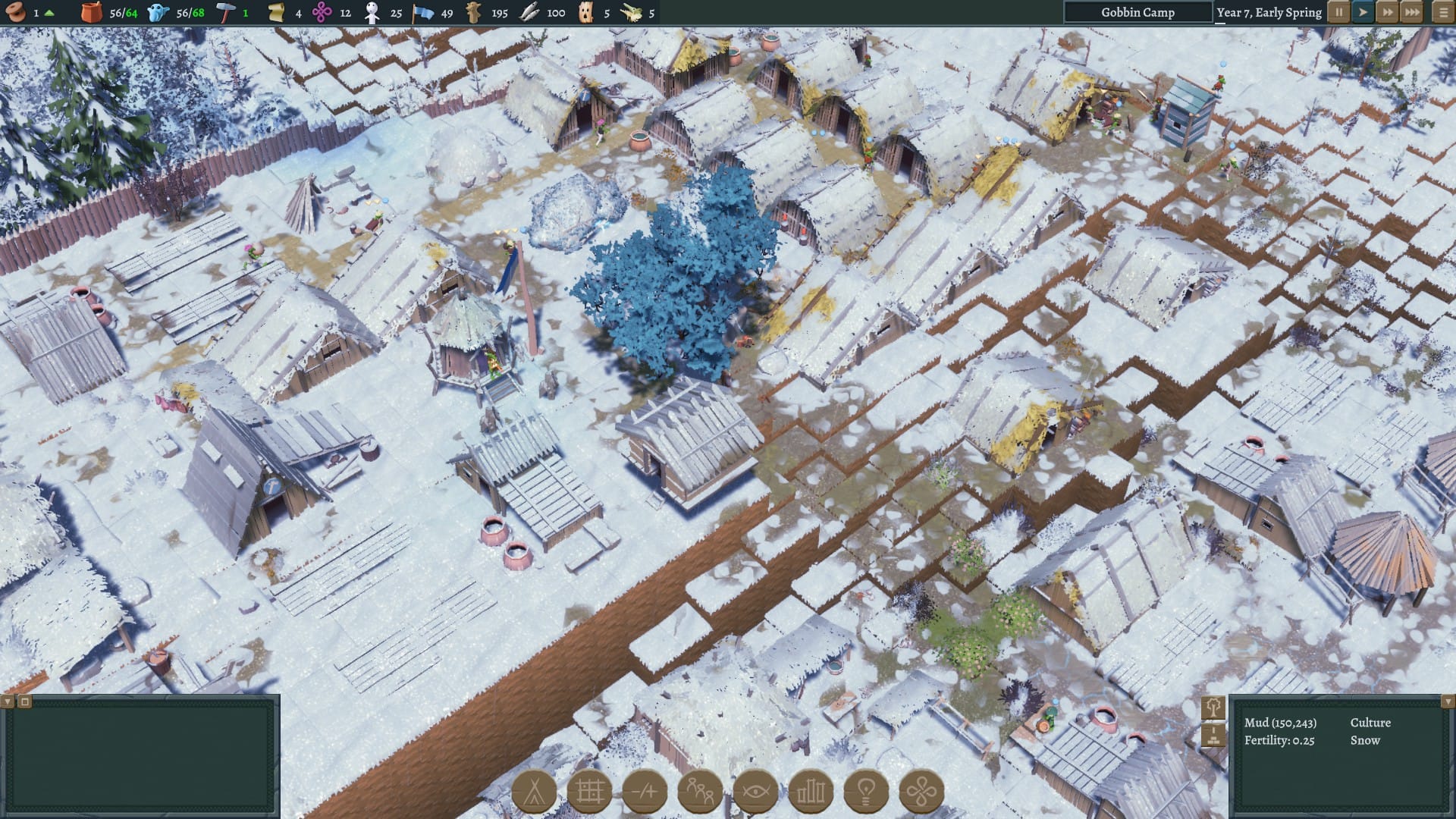
Schedule and Uploads.
This should be an interesting week. Tomorrow I will be on Twitch front page starting at noon pacific time. That'll last for 8 hours so buckle up! Wednesday will be a normal stream and Thursday I'm hosting an interview with Tarn Adams of Dwarf Fortress fame. It'll just be the two of us. I'm taking questions via this link. It'll be much earlier in the day then in interviews in the past to fit with Tarns new time zone. Friday stream is a maybe depending on where my head is at.
